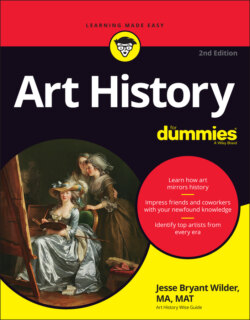Читать книгу Art History For Dummies - Jesse Bryant Wilder - Страница 48
Distinguishing an Art Period from a Movement
ОглавлениеDistinguishing an art movement from an art period is largely a matter of scope: the duration and intention noted in Chapter 1 and the number of participating artists.
An art movement is launched intentionally by a small group of artists who want to promote or provoke change. For example, members of the movement may oppose war or a particular political system. Here are some characteristics of movements:
A movement is usually associated with an art style and often an ideology. Like the women’s movement or the civil rights movement, an art movement may push for a new perspective on specific issues.
Sometimes, artists in a movement write manifestos that spell out their goals and hold movement meetings.
Typically, the artists in a movement hang out together and show their work in group exhibitions. Their art shares stylistic features and focuses on similar subjects.
An art period is often based on a parallel historical era and involves artists who paint similar subjects and typically, though not always, share a set of beliefs. For example, here are key characteristics of art made during the early Christian era:
The period is referred to as the Early Christian art period. Art historians group art of this period together because the artists lived at the same time, painted Christian subjects, and were often driven by the same spirit. Note: Early on, pagan artists were frequently hired to create Christian subject matter because, for the most part, they were the only ones with the experience and requisite skills.
The artists didn’t write manifestos or hold meetings in which they discussed ideology and stylistic guidelines. Instead, their shared time frame and beliefs gave their art a similar “Early Christian” look.
